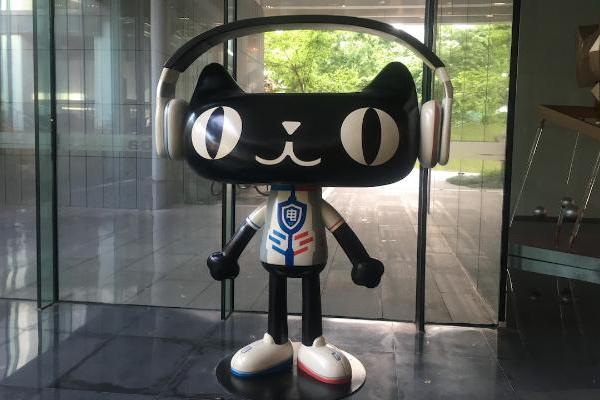
ж–Үз« жҸ’еӣҫ
Custom object detection:Example of custom object detection: darknet.exe detector test data/obj.data yolo-obj.cfg yolo-obj_8000.weights

ж–Үз« жҸ’еӣҫ

ж–Үз« жҸ’еӣҫ
How to improve object detection:
- Before training:
- set flag random=1 in your .cfg-file - it will increase precision by training Yolo for different resolutions: link
- increase network resolution in your .cfg-file (height=608, width=608 or any value multiple of 32) - it will increase precision
- check that each object that you want to detect is mandatory labeled in your dataset - no one object in your data set should not be without label. In the most training issues - there are wrong labels in your dataset (got labels by using some conversion script, marked with a third-party tool, ...). Always check your dataset by using: https://github.com/AlexeyAB/Yolo_mark
- my Loss is very high and mAP is very low, is training wrong? Run training with -show_imgs flag at the end of training command, do you see correct bounded boxes of objects (in windows or in files aug_...jpg)? If no - your training dataset is wrong.
- for each object which you want to detect - there must be at least 1 similar object in the Training dataset with about the same: shape, side of object, relative size, angle of rotation, tilt, illumination. So desirable that your training dataset include images with objects at diffrent: scales, rotations, lightings, from different sides, on different backgrounds - you should preferably have 2000 different images for each class or more, and you should train 2000*classes iterations or more
- desirable that your training dataset include images with non-labeled objects that you do not want to detect - negative samples without bounded box (empty .txt files) - use as many images of negative samples as there are images with objects
- What is the best way to mark objects: label only the visible part of the object, or label the visible and overlapped part of the object, or label a little more than the entire object (with a little gap)? Mark as you like - how would you like it to be detected.
- for training with a large number of objects in each image, add the parameter max=200 or higher value in the last [yolo]-layer or [region]-layer in your cfg-file (the global maximum number of objects that can be detected by YoloV3 is 0,0615234375*(width*height) where are width and height are parameters from [net] section in cfg-file)
- for training for small objects (smaller than 16x16 after the image is resized to 416x416) - set layers = 23 instead of https://github.com/AlexeyAB/darknet/blob/6f718c257815a984253346bba8fb7aa756c55090/cfg/yolov4.cfg#L895 set stride=4 instead of https://github.com/AlexeyAB/darknet/blob/6f718c257815a984253346bba8fb7aa756c55090/cfg/yolov4.cfg#L892 and set stride=4 instead of https://github.com/AlexeyAB/darknet/blob/6f718c257815a984253346bba8fb7aa756c55090/cfg/yolov4.cfg#L989
- for training for both small and large objects use modified models:Full-model: 5 yolo layers: https://raw.githubusercontent.com/AlexeyAB/darknet/master/cfg/yolov3_5l.cfgTiny-model: 3 yolo layers: https://raw.githubusercontent.com/AlexeyAB/darknet/master/cfg/yolov3-tiny_3l.cfgYOLOv4: 3 yolo layers: https://raw.githubusercontent.com/AlexeyAB/darknet/master/cfg/yolov4-custom.cfg
- If you train the model to distinguish Left and Right objects as separate classes (left/right hand, left/right-turn on road signs, ...) then for disabling flip data augmentation - add flip=0 here: https://github.com/AlexeyAB/darknet/blob/3d2d0a7c98dbc8923d9ff705b81ff4f7940ea6ff/cfg/yolov3.cfg#L17
- General rule - your training dataset should include such a set of relative sizes of objects that you want to detect:train_network_width * train_obj_width / train_image_width ~= detection_network_width * detection_obj_width / detection_image_widthtrain_network_height * train_obj_height / train_image_height ~= detection_network_height * detection_obj_height / detection_image_heightI.e. for each object from Test dataset there must be at least 1 object in the Training dataset with the same class_id and about the same relative size:object width in percent from Training dataset ~= object width in percent from Test datasetThat is, if only objects that occupied 80-90% of the image were present in the training set, then the trained network will not be able to detect objects that occupy 1-10% of the image.
жҺЁиҚҗйҳ…иҜ»
- windows.oldеҸҜд»ҘеҲ йҷӨеҗ—пјҹ
- дёҖдёӘеҸҜж”ҫеӨ§еӣҫеғҸзҡ„ејҖжәҗзҡ„жөҸи§ҲеҷЁжү©еұ•
- ж–°windowsеӢ’зҙўиҪҜ件еҸҳз§ҚпјҢйҖҡиҝҮUSBй©ұеҠЁжЁӘеҗ‘дј ж’ӯ
- и®©Macз”өи„‘иҜ»еҸ–NTFSзЎ¬зӣҳзҡ„е…Қиҙ№ејҖжәҗзҡ„иҪҜ件
- 9дёӘдјҳз§Җзҡ„ VUE ејҖжәҗйЎ№зӣ®
- Win 10зі»з»ҹзӣҳзӘҒ然满дәҶпјҢдёҚдёӢиҪҪ第дёүж–№иҪҜ件пјҢеә”иҜҘжҖҺд№Ҳжё…зҗҶпјҹ
- CentOS7дёҠе®үиЈ…дёҺй…ҚзҪ®ејҖжәҗе Ўеһ’жңәTeleport
- е…ЁзҗғзҹҘеҗҚ25з§ҚејҖжәҗжғ…жҠҘеә“
- Win7家еәӯзүҲеҰӮдҪ•з»ҷж–Ү件еӨ№и®ҫзҪ®еҜҶз ҒпјҹWin7ж–Ү件еӨ№еҠ еҜҶж–№жі•
- Ubuntuе®үиЈ…еҸҠй…ҚзҪ®















